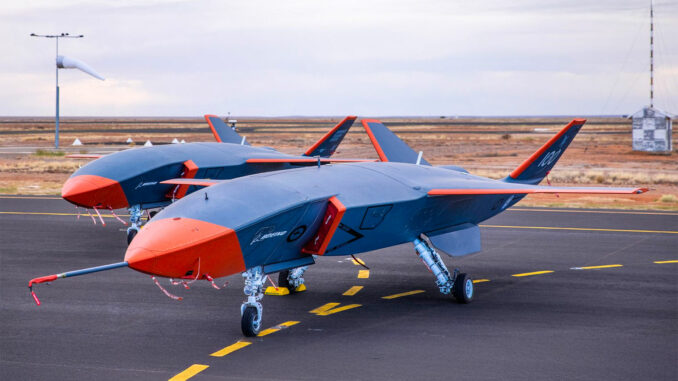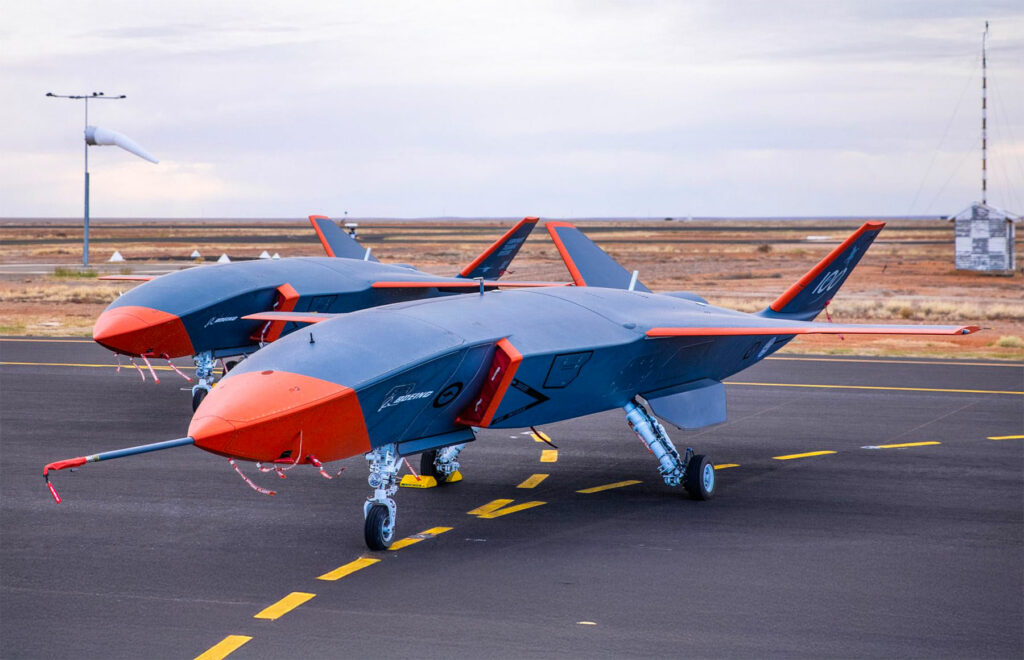
As the end of manned fighters approaches for the US Air Force, the NGAD program is being re-evaluated in favor of collaborative drones in the face of today’s threats.
The US Air Force is redefining its approach to air superiority in the face of the challenges posed by strategic competition. With advances in sensor technology and the growing threat from anti-aircraft systems, collaborative drones may soon replace manned fighters in the NGAD program. This strategic shift reflects a direct response to China’s military evolution and the realities observed during the conflict in Ukraine, where casualties revealed the vulnerability of traditional fighter aircraft.
Redefining air superiority strategy
Since the launch of the NGAD (Next Generation Air Dominance) program in 2015, the US Air Force has been preparing for the post-F-22 Raptor era, with the aim of maintaining air superiority for the coming decades. This program, initially conceived around the idea of 6th-generation manned fighters, aims to surpass the performance of current models. However, major strategic issues are emerging, particularly in view of the accelerating pace of technology and the growing power of UAVs.
The costs associated with manned fighter aircraft, combined with rapid advances in air defense and detection technologies, make it difficult to maintain this traditional approach. Estimated expenditure on the development of new fighters runs into billions of euros, with each aircraft potentially costing over 100 million euros in the production phase. Such investments are being called into question as alternatives such as collaborative drones, which are cheaper and more flexible, prove effective.
Collaborative drones: a response to new threats
Faced with these challenges, the CCA (Collaborative Combat Aircraft) program has become a priority. These drones, capable of operating in coordination with piloted fighters or autonomously, represent an appropriate response to the increasing threats, particularly those posed by the Chinese Air Force. Counter-furctivity technology and advanced air defense systems make drones more attractive. The average cost of a CCA drone can be less than 10 million euros, enabling massive deployments without human risk.
The flexibility of UAVs means they can be used for attack, reconnaissance or “Loyal Wingman” missions, operating alongside manned aircraft to ensure numerical superiority. China is also investing heavily in its drone capabilities, with R&D spending forecast to reach over €5 billion annually by 2025.

Lessons from the Ukraine conflict
The war in Ukraine highlighted the fragility of pilots in high-intensity conflicts. The US Air Force has observed that losses of experienced pilots are difficult to replace, unlike aircraft that can be replaced more quickly. In Ukraine, trained pilots, whose training costs several million euros and takes many years, were decimated, highlighting a major limitation of fighter aircraft flown in prolonged situations.
The Ukrainian casualty report shows a 30% drop in the number of experienced pilots in the first months of the conflict, a significant figure that warns of the vulnerability of manned air forces. In response, the US Air Force could give preference to drones, less dependent on human resources and capable of extended missions in high-intensity zones.
The economic and technological impact of the transition
Phasing out manned fighters in favor of drones means rethinking the production and supply chains of the aerospace giants. The military drone market, estimated to be worth 30 billion euros by 2030, is attracting increasing investment and innovation. Lockheed Martin, the main player in NGAD, and other defense manufacturers, must now focus on unmanned technologies, involving a reconfiguration of manufacturing processes and technology partnerships.
The NGAD program will undergo a transformation that will also influence military training and careers. Future US Air Force recruits may be trained more in cybernetics and artificial intelligence than in fighter piloting. This shift towards more automated, technological warfare will reduce the cost of air training infrastructure by almost 20%, while increasing the operational capabilities of the armed forces.
War Wings Daily is an independant magazine.